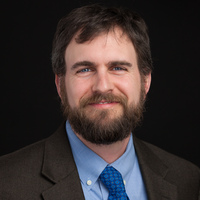Benjamin Tilghman

- 410-810-5776
- btilghman2FREEwashcoll
- Daly 217
Office Hours
TBD, also available by appointment
In my classes, I strive to help students discover that by looking carefully and thoughtfully at any work of art, they can begin to ask questions and explore ideas that will help them toward a richer understanding of their world, and a deeper connection to the other people within it.
Education
- Ph.D. 2009 The Johns Hopkins University
- M.A. 2003 Williams College
- B.A. 1999 Lawrence University
Research Spotlight
My research thus far has focused primarily on objects from early medieval (ca. 600-900) Ireland and Great Britain, with special emphasis on manuscripts such as the Book of Kells and the Lindisfarne Gospels. I am particularly interested in developing ways to think more expansively about the place of ornament and calligraphic writing in Medieval Art and western art history more broadly.
Since 2010, I have been a core member of the Material Collective, a collaborative working group of art historians dedicated to fostering innovative and humane research in the humanities.
Research
PDFs of these essays and a full CV are available at
https://washcoll.academia.edu/BenjaminTilghman
Articles and essays
“Script, Pseudoscript, and Pseudo-pseudoscript in the work of Filippo Lippi,” in Hidden Script: Writing Concealed in Plain Sight, edited by Stephen Houston and John Bodel (Cambridge UP), forthcoming.
“Patterns of Meaning in Insular Manuscripts: Folio 183r in The Book of Kells” in Visualcy, Literacy, Graphicacy: Graphic Devices and the Early Decorated Book, ed. by Michelle Brown, Ildar Garipzanov, and Benjamin C. Tilghman (Boydell & Brewer, 2017), 163-78.
“Pattern, Process, and the Creation of Meaning in Insular Carpet Pages,” West 86th 24:1 (Spring-Summer 2017): 3-28.
“Ornament and Incarnation in Insular Art,” Gesta 55:2 (Fall, 2016): 157-77.
(with Nancy Thompson), “The Hoard Speaks,” postmedieval 7:3 (Fall, 2016): 349-51.
“On The Enigmatic Nature of Things in Anglo-Saxon Art,” Different Visions, Special Issue: “Active Objects,” edited by Karen E. Overbey and Benjamin C. Tilghman, 4 (2014): 1-44.
“Writing in Tongues: Mixed Scripts and Style in Insular Art.” In Insular and Anglo-Saxon: Art and Thought in the Early Middle Ages, edited by Column Hourihane, 92-108. University Park, PA: Penn State University Press, 2011.
“The Shape of the Word: Extra-linguistic Meaning in Insular Display Lettering.” In “The Iconicity of Script,” edited by Jeffrey Hamburger, special issue, Word & Image 27, no. 3 (2011): 292-308.
“Divinity in the Details: Miniaturization and Meditation in a Passion Cycle by Johannes Wierix.” In “A New Look at Old Things,” edited by Kathryn B. Gerry and Richard A. Leson, special issue, Journal of the Walters Art Museum 68/69 (2010/2011): 125-35.
Teaching
In my teaching, my first priority is to instill the educational values that I believe to be at the core of the liberal arts philosophy: curiosity, interdisciplinary exchange, precise and creative thinking, respect for others, and the pure pleasure of inquiry and discovery. Alongside these values I try to help students develop the skills that will help them succeed in school and in their future as professionals and lifelong learners. Chief among these skills are active reading, precise writing, sophisticated research methods, and the development of rich and fruitful questions. Also important are those skills particularly crucial to the work of art history: careful and patient observation, an awareness of process and materials, an understanding of metaphor and symbolism, and the development of a delicate balance between intuitive and analytical thinking.
Courses Taught:
- Introduction to the History of Western Art
- Arts of the Islamic World
- Early Medieval Art
- Byzantine Art
- Gothic and Northern Renaissance Art
- Italian Renaissance Art
- Seminar: Medieval Illuminated Manuscripts
- Seminar: Thing Theory and Art
- Methods of Art History
- Supervised Tutorials on: Art & Materiality; Video Games as Art; Ecocritical Approaches to Textiles; The Medieval Book of Hours; William Blake
Professional Experience
- 2017- Assistant Professor of Art History, Washington College
- 2012-2017 Assistant Professor of Art History, Lawrence University
- 2010-2012 Professorial Lecturer in Art History, George Washington University
- 2010-2011 Lecturer, Department of Art History, Theory, and Criticism, Maryland Institute College of Art
- 2010 Research Associate, Department of Manuscripts and Rare Books, Walters Art Museum (Baltimore, MD)
- 2007-2009 Zanvyl Krieger Curatorial Fellow, Dept. of Manuscripts and Rare Books, Walters Art Museum